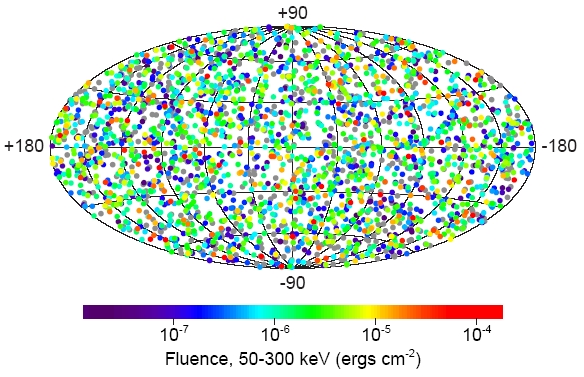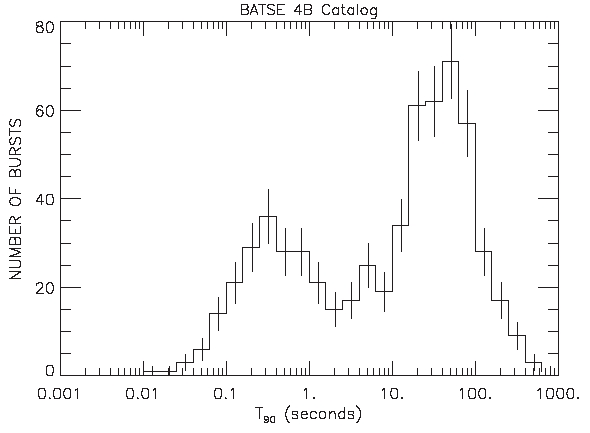
2. ELECTROMAGNETIC OBSERVATIONS
2.3 PROMPT g-RAY EMISSION
2.3.4 PROMPT g-RAY EMISSION IN THE CONTEXT OF THE FIREBALL PHENOMENOLOGY
The fireball model, which is the last remaining model from hundreds of models proposed since the discovery of GRBs in the early 1970's, is the standard model of GRBs and has been verified in the observations of spectral energy fits to both prompt gamma ray emission and afterglows, spectroscopic redshifts, and the recent discovery of polarization. When used accurately, in conjunction with all associated discrete GRB parameters, the fireball model makes very specific predictions regarding the expected neutrino flux at the source and Earth. In addition, the fireball model has been used by every AMANDA analysis that has ever looked for neutrinos from GRBs.
The generic mechanism responsible for generating the large isotropic equivalent energy (~ 1052 ergs) released in GRBs during intervals ranging from ~0.01 to ~1000 seconds is the dissipation, via shocks, of highly relativistic kinetic energy, acquired by electrons and positrons Fermi accelerated in an optically thick, relativistically expanding plasma, commonly referred to as a fireball (Piran 1998, Piran 2004). The acceleration of electrons in the intense magnetic field of the fireball leads to the emission of prompt non-thermal g-rays (~50 keV ≤ Eg ≤ ~350 keV), detected by satellite experiments such as BATSE and Swift, via synchrotron radiation (Lloyd & Petrosian 2000) and possibly inverse Compton scattering. GRB localizations yield an isotropic spatial distribution, illustrated in figure 2.3.4.1, with a bimodal duration distribution (Kouveliotou et al. 1993) spanning six orders of magnitude, effectively separating the burst population into short T90 < 2 seconds and long T90 ≥ 2 seconds classes, as illustrated in figure 2.3.4.2.

FIGURE 2.3.4.1: Equatorial sky plot of BATSE GRBs (BATSE 2001b), illustrating their isotropic spatial distribution. This was an early indicator of their cosmological nature, which was solidified with afterglow redshift measurements.

FIGURE 2.3.4.2: Bimodal distribution of T90 durations for BATSE GRBS (BATSE 2001). The T90 interval is the accumulation time required for a burst to emit from 5%-95% of the total number of detector counts above background. Long and short GRB populations span T90 durations that are greater than and less than ~2 seconds, respectively.
The hardness of the GRB spectra and the necessity for the expanding fireball shell to be optically thin, require bulk Lorentz boost factors in the range ~100 ≤ G ≤ ~1000, with typical values of ~300. The variability of the internal shocks is manifested in the unique complex time structure found in discrete GRB light curves (Kobayashi 1997), as illustrated in the BATSE AMANDA sub sample (for each GRB light curve, the x-axis label contains the truncated Julian date (TJD) and trigger time (T) in UTC seconds of day, i.e. TJD:T).
A detailed overview of the fireball phenomenology in context of GRB observations may be found elsewhere (Piran 2004, Zhang & Meszaros 2004). It should be noted that the fireball phenomenology in and of itself does not require the emission of neutrinos. The absence of neutrinos would only constrain hadronic acceleration, since the phenomenology makes robust electromagnetic predictions, independently from leptonic emission. Only in the context of hadronic acceleration, in the form of protons, is coincident high energy leptonic emission expected.